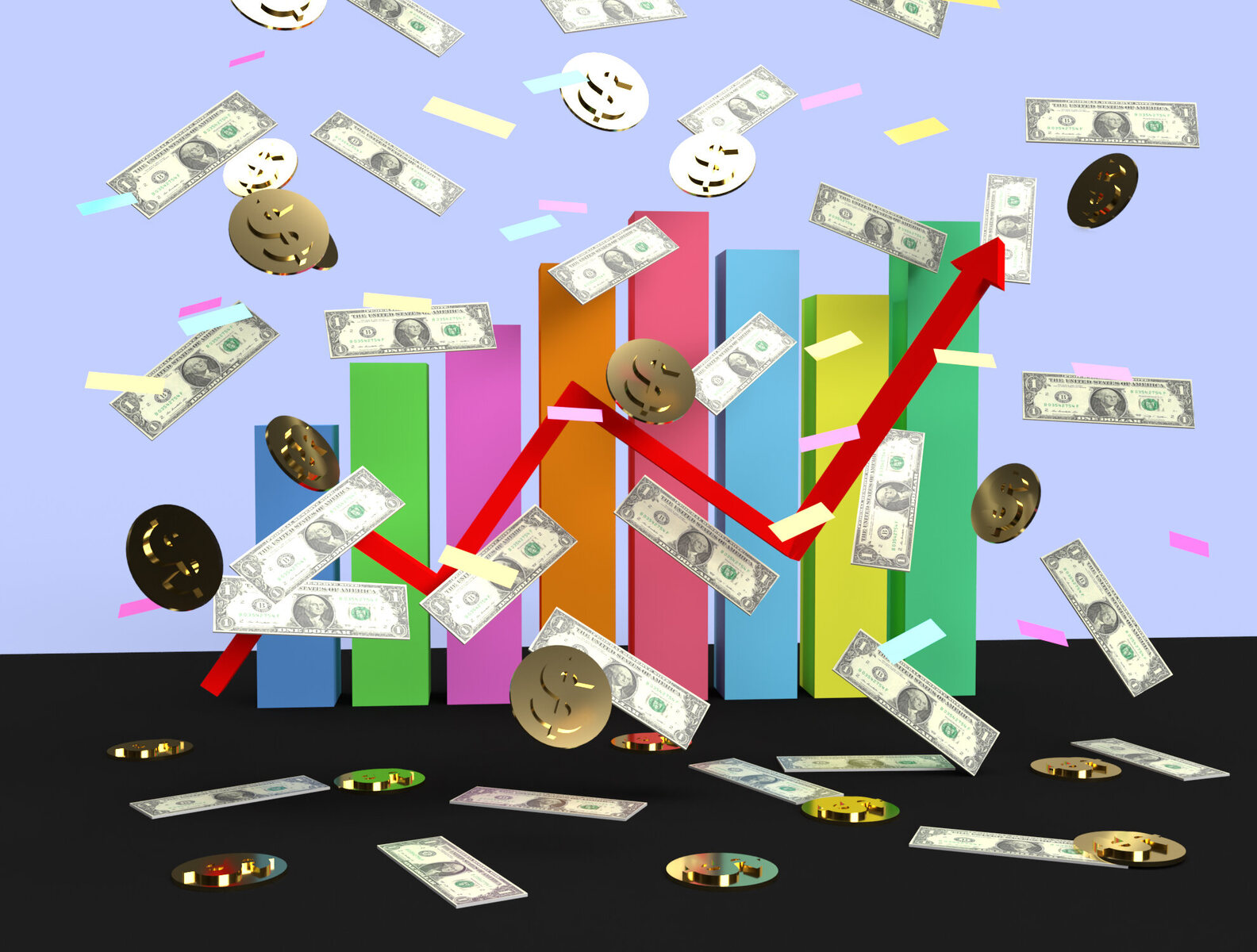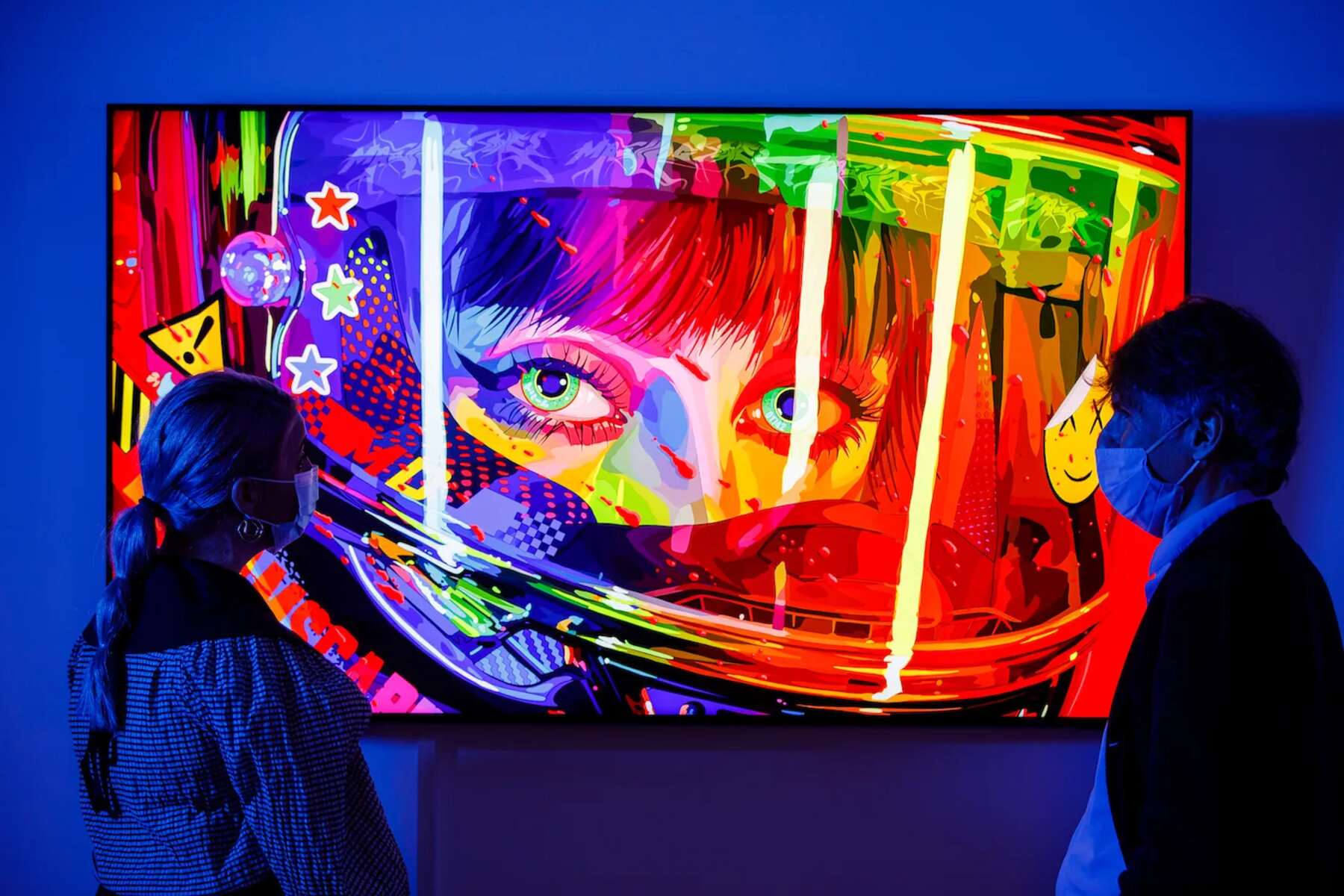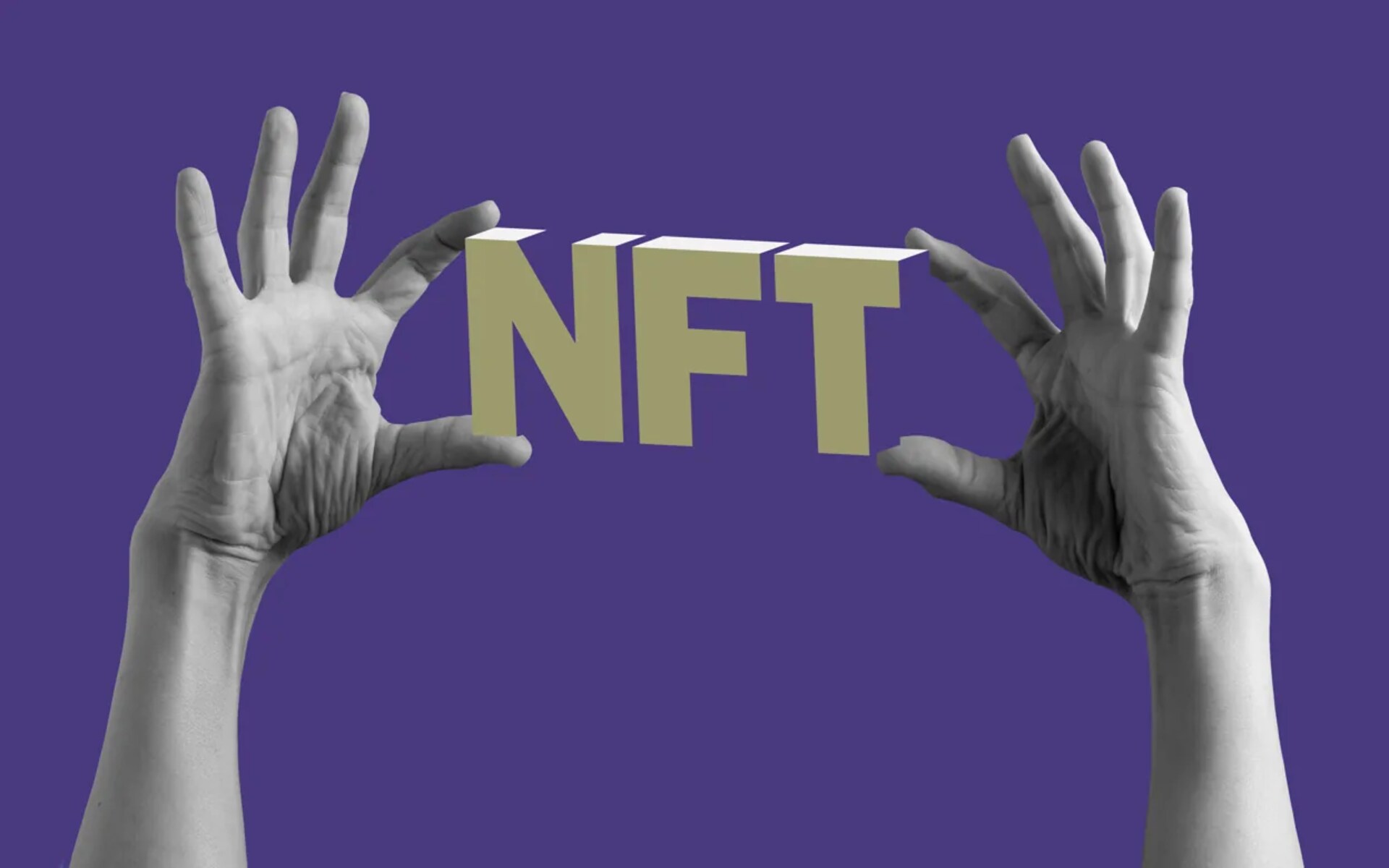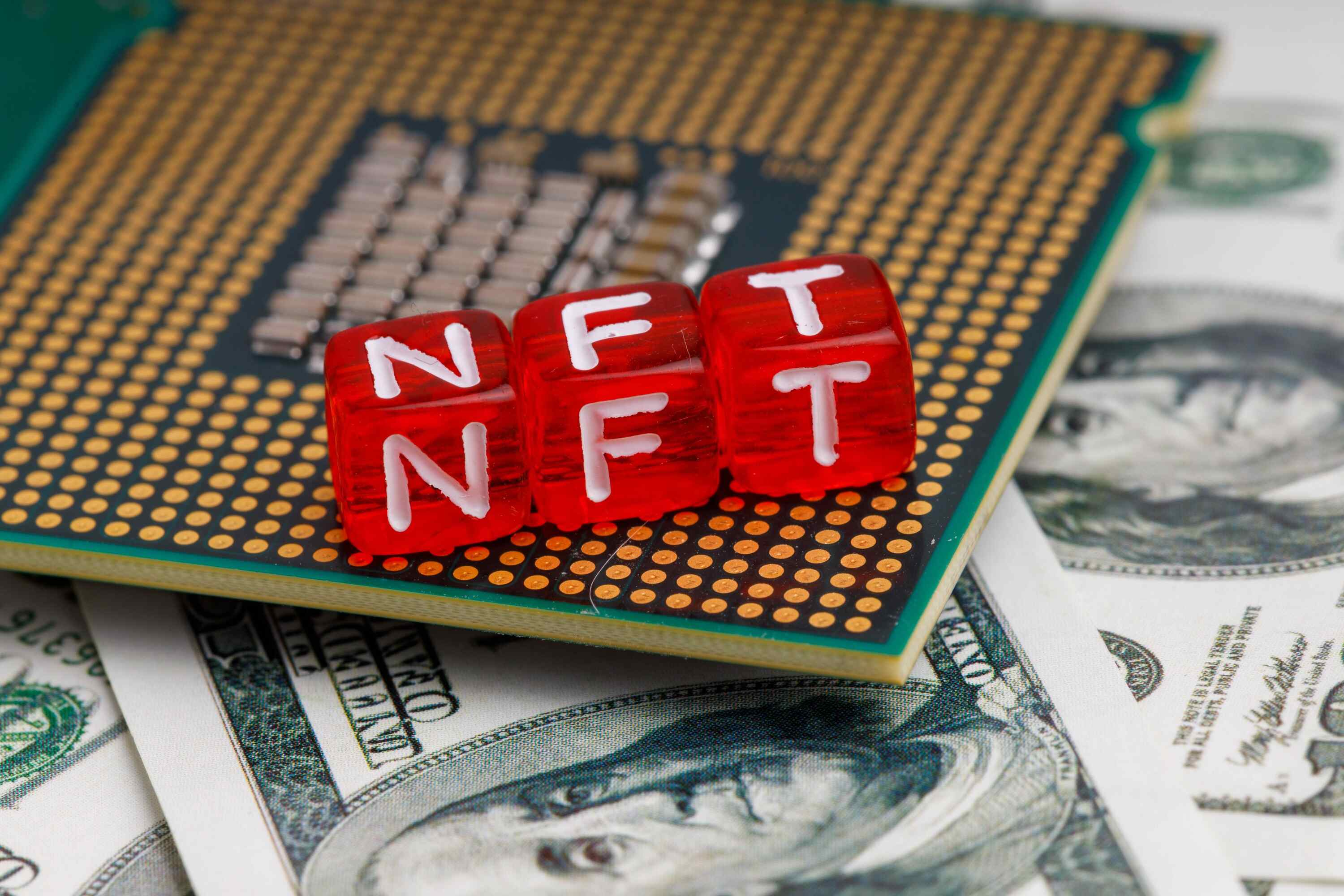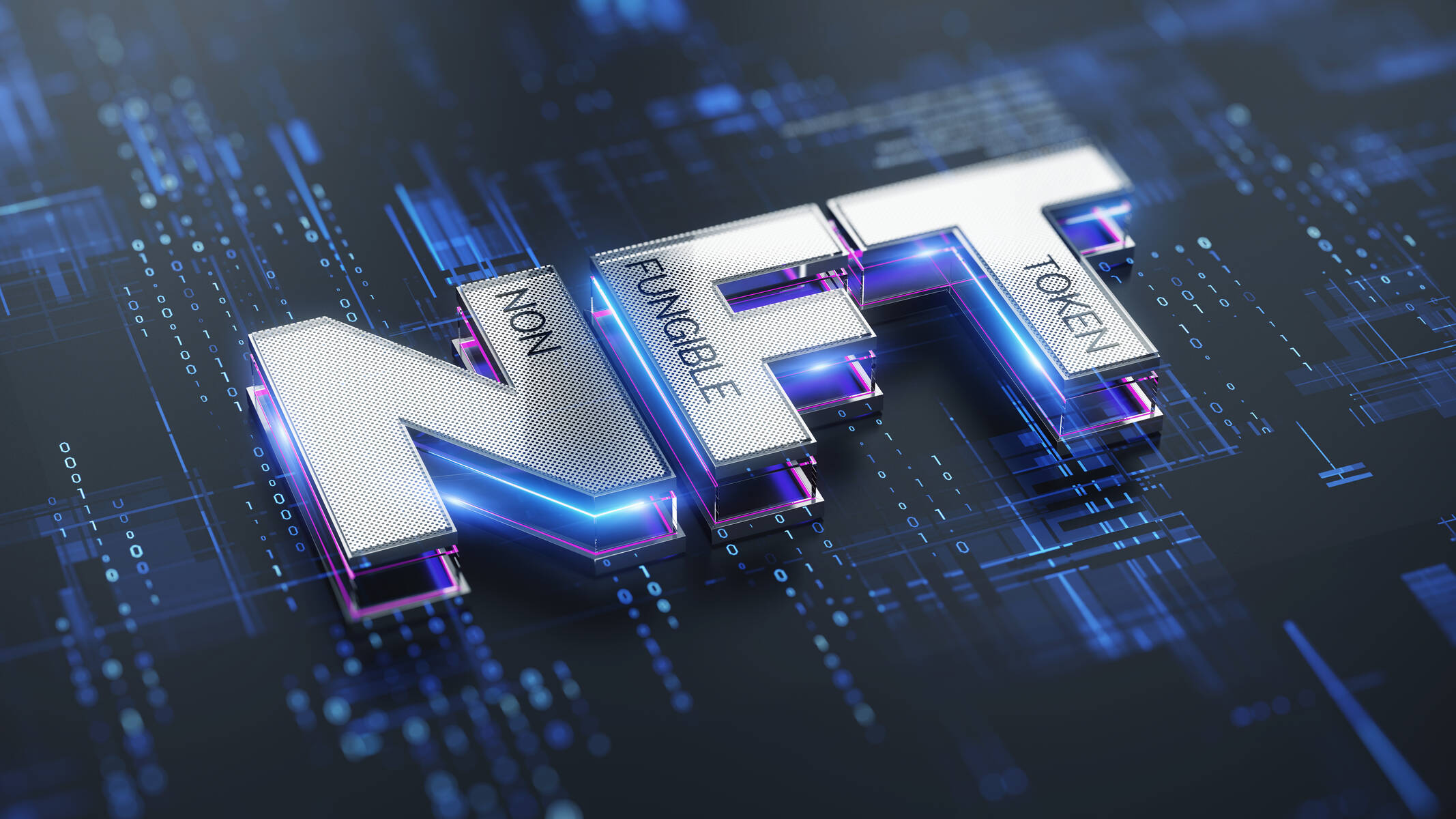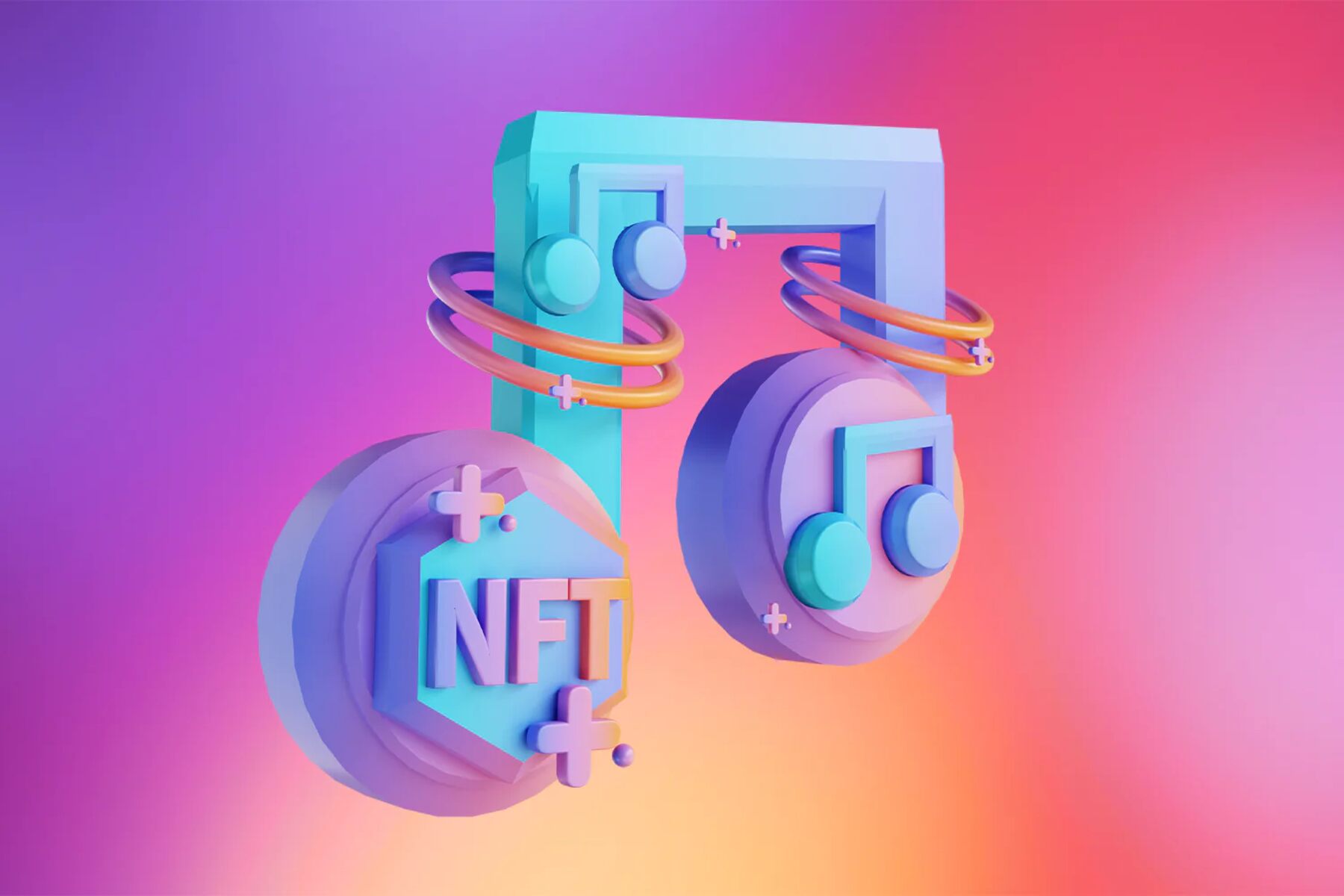Introduction
Welcome to the exciting world of NFTs! If you’ve been browsing the internet or following the latest trends in the digital realm, you’ve probably come across this intriguing acronym. But what exactly does NFT mean? In this article, we will unravel the mystery behind NFTs, exploring their definition, origin, functionality, and their ever-increasing presence in popular culture.
NFT stands for Non-Fungible Token. Unlike cryptocurrencies such as Bitcoin or Ethereum, which are digital assets that can be exchanged for one another at an equivalent value, NFTs are unique digital tokens that represent ownership and authenticity of a specific item or piece of content. This can include digital art, music, videos, collectibles, and even real estate.
The concept of NFTs can be traced back to the early 2010s, but it wasn’t until recently that they gained widespread attention and popularity. With the advent of blockchain technology, NFTs have found their perfect ecosystem for creation, ownership, and trading. Blockchain, a decentralized and transparent ledger system, ensures the security and immutability of NFT transactions, making them a trusted and valuable asset in the digital world.
So, how do NFTs actually work? Each NFT contains metadata that provides detailed information about the digital asset it represents, including its origin, creator, and unique characteristics. This metadata is stored on a blockchain, making it publicly accessible and tamper-proof. It’s worth noting that while anyone can view an NFT’s metadata, only the owner has actual control and ownership of the underlying asset.
The rise of NFTs has been closely intertwined with the explosion of popular culture. From world-renowned artists releasing limited edition digital art pieces as NFTs to musicians dropping exclusive albums, NFTs have become a new medium for creators to showcase their work and engage with their audience. Celebrities, athletes, and influencers have also jumped on the NFT bandwagon, leveraging the technology to monetize their brand and engage with their fans in unique and innovative ways.
Collecting NFTs has become a passion for many enthusiasts. Just like traditional collectors who seek out rare and valuable items, NFT collectors strive to acquire unique and highly sought-after digital assets. Owning an NFT can provide a sense of exclusivity and digital ownership, as well as the potential for future value appreciation.
As with any investment opportunity, there are risks and misconceptions associated with NFTs. We will explore these in more detail later in the article. However, it’s important to note that NFTs also come with numerous benefits, such as increased transparency in the art market, empowering artists with direct monetization opportunities, and enabling collectors to support their favorite creators.
Definition of NFT
Before we delve deeper into the world of NFTs, let’s start by examining what exactly an NFT is. As mentioned earlier, NFT stands for Non-Fungible Token. The term “non-fungible” refers to the uniqueness and indivisibility of these digital tokens.
In simple terms, an NFT is a digital certificate of authenticity that represents ownership of a specific item or piece of content. This item can be anything from digital artwork, music, videos, virtual real estate, collectibles, or even virtual goods within video games. What sets NFTs apart from other digital assets is their distinct and irreplaceable nature.
Unlike cryptocurrencies such as Bitcoin or Ethereum, which are fungible and can be exchanged on a one-to-one basis, NFTs cannot be replaced or traded on an equal basis. Each NFT possesses unique identifying information, including its origin, creator, and attributes that set it apart from any other similar item.
To put it simply, imagine you have a rare baseball card that is autographed by a famous player. That card, with its unique signature and history, cannot be simply swapped out for another baseball card. Similarly, an NFT represents a specific piece of digital content that cannot be replicated or interchanged for another.
The distinctiveness and ownership of NFTs are made possible through blockchain technology. NFTs are created, bought, and sold on blockchain platforms, which provide a transparent and secure environment for transactions. These platforms ensure that the ownership and authenticity of NFTs can be verified and authenticated by anyone accessing the blockchain.
It’s worth noting that while NFTs can have significant value, the inherent worth of the underlying digital content they represent lies in the eye of the beholder. The value is derived from factors such as the perceived scarcity, the reputation of the creator, and the demand from potential buyers. In recent years, the sale of NFTs has garnered significant attention in the media, with some high-profile transactions reaching millions of dollars.
In the next sections, we will explore the fascinating origin of NFTs, how they function, the rise of NFTs in popular culture, and the benefits and drawbacks associated with these unique digital tokens.
The Origin of NFTs
The concept of non-fungible tokens (NFTs) can be traced back to the early 2010s, but it was only in recent years that they gained significant prominence and attention. The birth of NFTs can be attributed to the convergence of various factors, including the development of blockchain technology and the growing demand for digital ownership in the digital age.
The groundwork for NFTs was laid with the emergence of cryptocurrencies like Bitcoin and Ethereum. These digital currencies introduced the concept of blockchain, a decentralized and transparent ledger system that ensures the security and immutability of transactions. The development of blockchain technology provided the necessary infrastructure for the creation and transfer of unique digital assets.
In 2012, a platform called Colored Coins implemented the concept of “coloring” Bitcoin to represent specific assets. Although this approach laid the foundation for tokenizing and representing real-world assets on the blockchain, it was limited in its functionality and practicality.
It wasn’t until 2017 that the NFT revolution truly began. Ethereum, a blockchain platform with smart contract capabilities, introduced the ERC-721 standard. This standard allowed for the creation and exchange of non-fungible tokens, marking a significant milestone in the evolution of NFTs.
The ERC-721 standard enabled developers and creators to tokenize and represent unique digital assets on the Ethereum blockchain. This breakthrough opened up a world of possibilities, allowing artists, musicians, and other creators to sell and trade digital assets with verifiable ownership and provenance.
One of the first projects to gain widespread attention in the NFT space was CryptoKitties. Launched in 2017, CryptoKitties allowed users to collect, breed, and trade virtual cats that were represented as NFTs. The game quickly gained popularity, causing a surge in transactions on the Ethereum blockchain and highlighting the potential of NFTs for digital collectibles.
Since then, the NFT ecosystem has continued to grow and expand. Artists, musicians, and other creators have embraced NFTs as a means to monetize their digital creations directly, without the need for intermediaries or traditional gatekeepers. This newfound accessibility has empowered creators, democratizing the art world and allowing for new forms of expression.
Today, NFTs have become a global phenomenon, with major art institutions, auction houses, and celebrities entering the market. The technology has expanded beyond the realm of digital art, with NFTs being used to tokenize music albums, virtual real estate, virtual goods in video games, and even virtual experiences.
The origin of NFTs can be seen as a response to the growing demand for digital ownership and the need to establish authenticity and provenance in the digital realm. As technology continues to evolve, it is likely that NFTs will continue to push boundaries and pave the way for new possibilities in the world of digital assets.
How NFTs Work
To understand how non-fungible tokens (NFTs) work, we need to delve into the underlying technology that powers them: blockchain. NFTs leverage blockchain’s decentralized and transparent nature to provide a secure and verifiable way of owning and transferring digital assets.
At the core of NFTs is a smart contract, a self-executing contract with the terms of the agreement directly written into code. These smart contracts are created and deployed on blockchain platforms, with Ethereum being the most popular choice due to its support for NFT standards like ERC-721 and ERC-1155.
When an NFT is created, it is minted as a unique token on the blockchain. The token contains metadata that provides detailed information about the asset it represents, including its origin, creator, and attributes. This metadata is recorded permanently on the blockchain, ensuring the immutability and transparency of the NFT’s ownership and history.
Once an NFT is minted, it can be bought, sold, and traded on various NFT marketplaces. These marketplaces act as platforms where creators and collectors can interact and transact with each other. Transactions on these marketplaces are typically executed using cryptocurrencies, with Ethereum being the most widely accepted form of payment.
When a buyer purchases an NFT, the ownership of the digital asset is transferred to their digital wallet address. The blockchain records this transfer of ownership, making it publicly accessible and verifiable by anyone. This feature ensures the authenticity and provenance of the NFT, as the entire transaction history is recorded on the blockchain.
One of the key benefits of NFTs is that they allow creators to earn royalties on secondary sales. Smart contracts can be programmed to automatically distribute a percentage of the sale price to the original creator whenever the NFT is resold in the future. This provides artists and creators with a continued stream of income long after the initial sale.
While NFTs provide a unique way of owning and transferring digital assets, it’s essential to understand that owning an NFT does not necessarily grant ownership of the underlying content itself. Instead, it represents a certificate of authenticity and ownership for that specific piece of digital content.
It’s important to note that blockchain technology comes with its limitations, including scalability issues and environmental concerns. The high energy consumption associated with blockchain networks, particularly proof-of-work chains like Ethereum, has raised questions about the sustainability of NFTs.
Overall, NFTs have revolutionized the way we perceive and interact with digital assets. They provide a secure and transparent means of owning and transferring digital content, empowering creators and collectors alike. As the technology continues to evolve and mature, NFTs are likely to reshape various industries and unlock new possibilities in the digital world.
The Rise of NFTs in Popular Culture
Non-fungible tokens (NFTs) have catapulted into popular culture, capturing the attention and imaginations of artists, creators, collectors, and enthusiasts around the world. With their unique ability to represent digital ownership and authenticity, NFTs have become a new medium for creativity, expression, and engagement.
The art world has been one of the primary domains where NFTs have made a significant impact. Artists have embraced NFTs as a means to showcase and monetize their digital creations like never before. Digital artists can now directly sell their artwork as NFTs, bypassing the traditional gatekeepers and intermediaries of the art market. This newfound accessibility has democratized the art world, granting artists greater control over their work and the opportunity to reach a global audience.
Renowned artists such as Beeple, who sold a digital artwork for a record-breaking $69 million, have garnered widespread attention and solidified NFTs as a legitimate and valuable asset in the art market. Museums and galleries are also taking notice, hosting exhibitions and showcasing NFT-based artwork alongside traditional mediums.
Music has also experienced a significant NFT revolution. Musicians can release limited edition albums or tracks as NFTs, providing fans with a unique and exclusive ownership experience. NFTs allow artists to establish a deeper connection with their audience, as fans can directly support their favorite musicians and gain access to exclusive content or experiences.
Popular mainstream artists, including Kings of Leon, Grimes, and The Weeknd, have all ventured into the NFT space, launching their own NFT collections and engaging their fan bases in new and innovative ways.
The convergence of NFTs and virtual reality (VR) has opened up even more possibilities for creativity and engagement. Virtual worlds and VR platforms have embraced NFTs, allowing users to own virtual real estate, virtual goods, and other digital assets within these immersive environments. The concept of owning and trading virtual assets has become a new frontier in the gaming industry and has the potential to transform the way we interact and participate in virtual experiences.
The rise of NFTs in popular culture has not been limited to the art and music spheres. Celebrities, athletes, and influencers have also jumped on the NFT bandwagon. They have leveraged NFTs as a means to monetize their brand, connect with fans, and provide unique digital collectibles or experiences.
The emergence of social media and online communities has played a pivotal role in driving the adoption and popularity of NFTs. Platforms like Twitter, Instagram, and TikTok have become spaces where NFT enthusiasts can showcase their collections, discuss the latest trends, and discover new artists and opportunities.
As NFTs continue to gain traction in popular culture, it’s important to recognize that they are not just a passing trend or a speculative bubble. They represent a fundamental shift in how we perceive and value digital content, redefining the relationship between creators and consumers. Their impact will continue to shape the creative landscape, fostering new opportunities and empowering individuals to explore and express themselves in the digital realm.
Collecting NFTs
Collecting non-fungible tokens (NFTs) has become a passionate pursuit for many enthusiasts, offering a new and exciting way to engage with digital art, music, virtual goods, and more. NFT collectors seek to acquire unique and highly sought-after digital assets, creating a sense of exclusivity and ownership in the digital realm.
One of the intriguing aspects of collecting NFTs is the ability to own rare and limited-edition digital items. Unlike traditional collectibles, such as physical coins or stamps, NFTs can have a defined scarcity encoded within the smart contract. This scarcity can contribute to the value and appeal of an NFT, driving collectors to acquire unique pieces before they are sold out or unavailable.
Collecting NFTs goes beyond traditional forms of collecting by offering a dynamic and interactive experience. NFT collectors can explore digital galleries, attend virtual events, and interact with other collectors and artists in online communities. These platforms provide an immersive environment where collectors can showcase their collections, discover new artists, and engage in discussions about the latest trends in the NFT space.
NFT collections can range from individual pieces of art or music to curated portfolios of various digital assets. Some collectors focus on specific artists or genres, while others seek out rare and valuable NFTs that hold potential for future appreciation. The thrill of collecting lies in the hunt for unique items and the potential for discovering hidden gems within the rapidly evolving NFT ecosystem.
As with any collectible, the value of NFTs can fluctuate over time. While some collectors approach their NFT acquisitions purely as a passion project, others view it as an investment opportunity. The speculative nature of the NFT market has seen some NFTs appreciate in value significantly, providing collectors with a potential financial return if they decide to sell their acquisitions in the future.
Collecting NFTs also allows individuals to support their favorite artists and creators directly. By purchasing an NFT, collectors can provide financial backing and recognition to the creators whose work they admire. This direct connection between creators and collectors is a unique aspect of NFT collecting, fostering a sense of community and collaboration within the digital art and music industries.
Platforms that facilitate the buying and selling of NFTs often include features that allow collectors to track the provenance and ownership history of the items they acquire. This traceability builds trust and authenticity within the NFT ecosystem, ensuring that collectors can verify the legitimacy and origin of their digital assets.
Collecting NFTs presents a new frontier for collectors, combining technology, artistry, and passion. The ability to own and showcase digital assets in a secure and verifiable way has transformed the world of collecting, providing collectors with a unique and immersive experience that transcends traditional physical objects.
Investing in NFTs
Investing in non-fungible tokens (NFTs) has become an increasingly popular avenue for individuals looking to diversify their investment portfolios and potentially capitalize on the growing value of unique digital assets. While NFTs offer excitement and potential financial gains, it’s important to approach NFT investments with caution and understanding.
One of the key drivers behind the interest in investing in NFTs is the potential for value appreciation. Some NFTs have seen significant price surges, attracting attention from collectors and investors alike. This speculative nature of the market has led to stories of NFTs being sold for millions of dollars, further fueling interest and investment opportunities in the space.
Investing in NFTs requires thorough research and understanding of the market. It’s crucial to evaluate the reputation and track record of creators, the scarcity of the asset, and the demand within the market. Just like any investment, conducting due diligence is essential to mitigate risks and make informed decisions.
Another aspect to consider when investing in NFTs is the potential for secondary market sales. Unlike traditional investments that provide dividends or interest, NFT investments rely on the potential for resale at a higher price. Some investors buy NFTs with the expectation that they will be able to sell them later at a profit as the value of the asset increases.
Investing in NFTs also brings exposure to the underlying digital content and the creator themselves. Acquiring an NFT can provide a direct connection to an artist or creator, supporting their work financially and involving investors in the success of the digital asset. This unique aspect of NFT investments adds an emotional and cultural element to the investment journey.
However, it’s important to note that the NFT market is still relatively new and evolving. The high-profile successes and soaring prices have brought attention, but they have also raised concerns about speculative bubbles and potential market corrections. Investing in NFTs should be approached with a calculated and diversified strategy, keeping in mind the inherent volatility and uncertainties associated with emerging markets.
Furthermore, the NFT market is not immune to risks and challenges. Ownership and authenticity disputes, plagiarism concerns, and potential copyright infringements are factors that investors should carefully consider. Engaging with reputable platforms, conducting proper due diligence, and understanding the legal implications can help mitigate these risks.
Overall, investing in NFTs can be an exciting opportunity for individuals looking to explore the potential of the digital art and collectibles market. However, it is crucial to approach NFT investments with a measured and educated approach, understanding the risks, conducting research, and diversifying one’s investment portfolio accordingly.
Common Misconceptions about NFTs
With the rise in popularity and mainstream attention surrounding non-fungible tokens (NFTs), several misconceptions and misunderstandings have emerged. It is important to address these misconceptions to gain a clearer understanding of the nature and potential of NFTs.
1. NFTs are all about art: While NFTs have made a significant impact on the art world, they extend far beyond the realm of art. NFTs can represent various digital assets, including music, virtual real estate, collectibles, virtual goods in video games, and more. The versatility of NFTs allows for a wide range of applications beyond traditional art forms.
2. NFTs have no intrinsic value: Some argue that since NFTs are purely digital and can be easily replicated, they have no intrinsic value. However, NFTs derive their value from the uniqueness, scarcity, and demand for the underlying digital content. Just like physical collectibles, the value of NFTs lies in the perception, sentiment, and market demand associated with them.
3. NFT ownership grants copyright ownership: This is a common misconception among NFT buyers. While owning an NFT may grant you proof of ownership for a specific digital asset, it does not automatically grant copyright ownership. The creator still retains the copyright unless explicitly stated otherwise in the terms of the NFT purchase.
4. NFTs are only for the wealthy: While high-profile NFT sales may give the impression that NFTs are only accessible to the wealthy, the reality is that NFTs come in a wide range of price points. From more affordable digital art and collectibles to exclusive limited editions, NFTs cater to various budgets and interests.
5. NFTs are purely speculative: While the potential for speculation exists within the NFT market, it is important to recognize that not all NFT investments are speculative. Many collectors and enthusiasts are genuinely interested in owning and supporting digital artists and creators. NFTs can be seen as a way to establish a direct connection with the artist and participate in the growth of the digital art and collectibles market.
6. NFTs are a passing fad: Some skeptics view NFTs as a short-lived trend that will eventually fade away. However, the underlying technology behind NFTs, blockchain, has proven to be robust and here to stay. NFTs have opened up new possibilities for creators, collectors, and investors, and continue to attract attention and innovation within the digital asset space.
7. NFTs are environmentally harmful: It is true that some NFTs, especially those minted on proof-of-work blockchains, have received criticism for their environmental impact. However, the technology is evolving, and there are efforts to develop more environmentally friendly alternatives, such as utilizing less energy-intensive blockchains and exploring other consensus mechanisms.
By dispelling these common misconceptions, we can gain a better understanding of the potential and applications of non-fungible tokens. NFTs offer unique opportunities for creators, collectors, and investors, and their impact on digital ownership and the creative landscape is likely to continue evolving in the years to come.
Benefits and Drawbacks of NFTs
Non-fungible tokens (NFTs) offer a range of benefits and drawbacks that are important to consider when exploring their potential applications and implications in the digital realm.
Benefits:
1. Authenticity and Provenance: NFTs provide a verifiable and transparent way to establish the authenticity and provenance of digital assets. The blockchain technology underlying NFTs ensures that the ownership history and metadata of an NFT can be accessed and verified by anyone, promoting trust and transparency in the digital ownership ecosystem.
2. Direct Monetization for Creators: NFTs allow creators, such as artists and musicians, to directly monetize their work without relying on intermediaries or traditional gatekeepers. By minting their creations as NFTs, artists can retain control over their intellectual property, establish a direct connection with their audience, and earn income from primary and secondary market sales.
3. Increased Transparency in the Art Market: Traditionally, the art market has often been opaque, making it difficult for artists to track the sales of their artwork and earn a fair share of the profits. NFTs, on the other hand, provide a transparent and publicly accessible ledger of transactions, ensuring that artists can receive royalties from secondary market sales and have visibility into the value appreciation of their works.
4. Ownership and Digital Collectibles: NFTs enable the concept of digital ownership, offering collectors the opportunity to own unique digital items and collectibles. NFT collectors can showcase and enjoy digital assets in a way that was not possible before blockchain technology. This opens up new frontiers for collectors, blurring the line between physical and digital assets.
Drawbacks:
1. Environmental Impact: The energy consumption associated with NFTs, particularly those minted on energy-intensive blockchains like Ethereum, has raised concerns about their environmental impact. The high computational power required to secure and validate transactions contributes to a significant carbon footprint. Efforts are underway to develop more sustainable alternatives within the NFT ecosystem.
2. Copyright and Intellectual Property Challenges: NFTs do not inherently solve copyright or intellectual property issues. While NFT ownership can prove provenance, it does not grant ownership of the underlying content or protect against unauthorized use or infringement. Additional legal frameworks and systems are needed to address intellectual property challenges effectively within the evolving landscape of NFTs.
3. Market Volatility: The market for NFTs can be highly speculative and volatile. Prices can fluctuate drastically, leading to potential financial risks for investors. It’s important to approach NFT investments with caution and conduct thorough research to evaluate the value and potential of the NFTs being considered.
4. Accessibility and Inclusivity: While NFTs have introduced new opportunities, not everyone has equal access to participate in the market. The cost of minting and purchasing NFTs, as well as the required technical knowledge, may pose barriers for certain artists, creators, and collectors. Efforts are being made to address these challenges and improve inclusivity within the NFT ecosystem.
By considering both the benefits and drawbacks of NFTs, we can navigate the evolving landscape of digital ownership more effectively, harnessing the potential of NFTs while also addressing the challenges and limitations they may present. As the technology continues to develop, it is essential to strike a balance between innovation and responsible adoption to create a sustainable and inclusive future for NFTs.
NFTs and Copyright
The intersection between non-fungible tokens (NFTs) and copyright is a topic that raises important considerations and challenges within the digital ownership landscape. While NFTs can provide proof of ownership and authenticity for digital assets, they do not inherently address or solve copyright-related issues.
It is important to understand that NFT ownership represents a certificate of authenticity and ownership for a specific piece of digital content. However, ownership of an NFT does not grant automatic copyright ownership or protection for the underlying intellectual property. Copyright laws continue to apply to the original digital content, including art, music, or any other form of creative work.
NFTs have sparked discussion and debate around issues such as unauthorized use, infringement, and the protection of artists’ rights. Artists and creators may choose to mint their own NFTs to establish a direct connection with their audience and control the sale and distribution of their work. However, it is important for artists to understand and navigate the complexities of copyright law to protect their intellectual property rights.
While some view NFTs as potentially assisting with copyright management, such as through attaching licensing terms or decentralized tracking of usage rights, these aspects are still evolving and require further development and implementation.
It’s worth noting that the NFT marketplace is not immune to instances of unauthorized appropriation or infringement. Artists should remain vigilant and take appropriate legal measures if they encounter copyright violations related to their NFTs. Copyright registration and working with legal professionals familiar with intellectual property laws can help creators protect their rights and seek remedies for infringements.
Collaboration and ongoing dialogue between artists, creators, platforms, and legal experts are key to addressing copyright challenges within the NFT ecosystem. As the market matures, it is expected that clearer solutions and frameworks will emerge to protect creators’ rights and ensure that proper compensation and recognition are given for the use of copyrighted materials.
The NFT market provides an opportunity to explore alternative revenue streams and direct monetization for artists. However, it is essential for artists and creators to navigate the legal landscape carefully, understanding their rights and taking appropriate measures to protect their work against unauthorized use, reproduction, or distribution.
Ultimately, NFTs and copyright involve complex legal considerations that require ongoing attention and adaptation to best serve the interests of artists, creators, collectors, and the broader digital ownership community.
The Environmental Impact of NFTs
The environmental impact of non-fungible tokens (NFTs) has emerged as a significant concern due to the energy consumption associated with blockchain technology. NFTs, particularly those minted on energy-intensive blockchains like Ethereum, have come under scrutiny for their carbon footprint and implications for climate change.
NFTs rely on blockchain technology, which operates through a consensus mechanism that requires significant computational power and energy consumption. The energy-intensity of proof-of-work blockchains, like Ethereum, has drawn attention to the environmental consequences of minting and trading NFTs.
The key environmental concern is the carbon emissions resulting from the massive energy consumption required to secure and validate transactions on the blockchain. The energy-intensive computational processes, often involving complex mathematical calculations, require substantial electricity usage, often sourced from fossil-fuel-powered plants.
The exact carbon footprint of NFTs is challenging to measure precisely due to the decentralized nature of blockchain networks and the variability in energy sources. However, reports and analyses have highlighted that the energy consumption of NFTs is comparable to or sometimes exceeds that of traditional industries like aviation or manufacturing.
Efforts are being made within the blockchain community to address the environmental impact of NFTs. One approach is the exploration of alternative consensus mechanisms such as proof-of-stake, which consumes significantly less energy compared to proof-of-work systems. Ethereum, the blockchain platform most commonly associated with NFTs, is actively transitioning to a proof-of-stake mechanism, which is expected to reduce its energy consumption.
Furthermore, various initiatives and platforms are emerging to support the sale and purchase of carbon offsets to offset the emissions generated from NFT transactions. Artists, collectors, and platforms have the option to contribute a portion of the proceeds from NFT sales to fund environmental projects, mitigating the carbon footprint associated with the creation and trading of NFTs.
It is also crucial to recognize that NFT technology itself can be utilized to foster sustainability and environmental awareness. NFTs have the potential to explore themes related to climate change, biodiversity, and environmental conservation, raising awareness and generating support for these critical issues.
As the NFT market continues to evolve, there is a growing need to implement sustainable practices within the industry. This includes adopting energy-efficient blockchain solutions, promoting transparency about the environmental impact of NFTs, and supporting projects that offset the carbon emissions generated by NFT transactions.
Collectors, artists, platforms, and blockchain developers all have a role to play in minimizing the environmental impact of NFTs. By seeking out platforms and marketplaces that prioritize sustainability, choosing energy-efficient blockchains, and supporting initiatives that promote carbon offsetting, participants in the NFT ecosystem can contribute to a more sustainable digital art and collectibles market.
Future of NFTs
The future of non-fungible tokens (NFTs) is full of exciting possibilities as the technology continues to evolve and capture the attention of creators, collectors, and investors worldwide. While there are still challenges and uncertainties to address, the potential for NFTs to shape various industries and redefine digital ownership is vast.
One of the key areas where NFTs are expected to expand is in the world of gaming and virtual reality (VR). NFTs have the potential to revolutionize the gaming industry by enabling true ownership of in-game assets, allowing players to buy, sell, and trade virtual goods with verifiable scarcity and provenance. Virtual worlds and VR platforms are already integrating NFTs, providing immersive experiences and unique ownership opportunities for users.
The art market will likely continue to be heavily influenced by NFTs, with artists embracing the technology as a means of direct monetization and engaging with their audience. Platforms and marketplaces catering specifically to NFT art are emerging, providing streamlined experiences for artists and collectors to transact and showcase their digital creations.
Intellectual property rights and copyright management within the NFT ecosystem will also be an area of focus. As more artists and creators mint NFTs, the industry will need to develop clearer frameworks and solutions to protect intellectual property, establish licensing terms, and address issues related to unauthorized use and infringement.
The environmental impact of NFTs will likely be a significant consideration moving forward. As blockchain technology evolves and energy-efficient alternatives gain prominence, the carbon footprint of NFTs is expected to decrease. The community’s collective effort to transition to more sustainable practices, such as utilizing greener blockchains and supporting carbon offset initiatives, will be crucial in ensuring the long-term viability and acceptance of NFTs.
Interoperability and standardization among different blockchain networks and platforms are also key factors for the future of NFTs. Efforts are underway to establish common standards and protocols, allowing for seamless transfer and interaction of NFTs across various ecosystems. This interoperability will enhance liquidity, accessibility, and value exchange within the NFT market.
Another exciting aspect of the future of NFTs lies in the potential for integration with other emerging technologies. NFTs can intersect with augmented reality (AR), virtual reality (VR), and other immersive technologies to create entirely new digital experiences. Integration with Internet of Things (IoT) devices and wearable technologies could enable unique interactions and functionalities for NFT owners.
Finally, as with any evolving technology, the future of NFTs will depend on overcoming challenges and addressing concerns around inclusivity, accessibility, and education. Efforts to improve user experiences, reduce barriers to entry, and increase understanding of the technology will contribute to the widespread adoption and acceptance of NFTs.
It’s important to recognize that the future of NFTs will be shaped by the collective actions, innovations, and collaborations of artists, creators, collectors, platforms, developers, and the wider community. As the technology advances and matures, NFTs have the potential to revolutionize digital ownership, redefine the art market, and transform various industries in the digital age.
Conclusion
Non-fungible tokens (NFTs) have emerged as a groundbreaking innovation, revolutionizing the way we perceive, buy, sell, and own digital assets. NFTs provide a secure and transparent way to establish ownership and authenticity, empowering artists, musicians, collectors, and enthusiasts in the digital realm.
Throughout this article, we have explored the definition of NFTs, their origins, functionality, and their increasing presence in popular culture. We have delved into the benefits and drawbacks associated with NFTs, acknowledged the challenges surrounding copyright and environmental impact, and looked toward the future of this technology.
NFTs offer exciting opportunities for artists to monetize their work directly, bypassing traditional gatekeepers and intermediaries. They provide collectors with unique experiences and the ability to own digital assets in a way that was not possible before. However, it’s important to navigate the NFT ecosystem with caution, considering factors such as market volatility, copyright considerations, and the environmental impact of blockchain technology.
Efforts are underway to address these challenges. From transitioning to more sustainable blockchain mechanisms to developing interoperable standards and promoting inclusivity within the NFT community, stakeholders are actively working to shape a more sustainable, transparent, and accessible future for NFTs.
The future holds immense potential for NFTs. As they continue to evolve, NFTs have the power to redefine digital ownership, enhance the art and gaming industries, and intersect with emerging technologies like virtual reality and augmented reality. Collaboration, education, and responsible practices will be key to navigating this evolving landscape and maximizing the benefits of NFTs.
As with any emerging technology, it is important to approach NFTs with an open mind, understanding that the market is still maturing and evolving. By staying informed, conducting research, and engaging responsibly within the NFT ecosystem, we can embrace the exciting possibilities that NFTs offer while mitigating risks and addressing challenges along the way.










